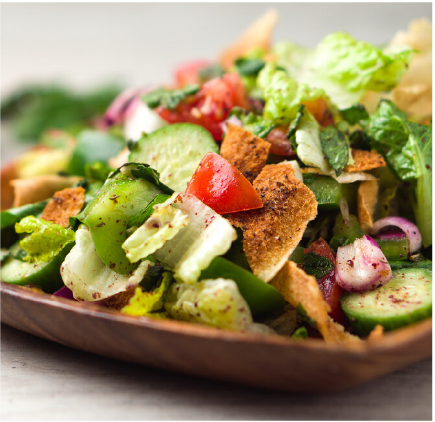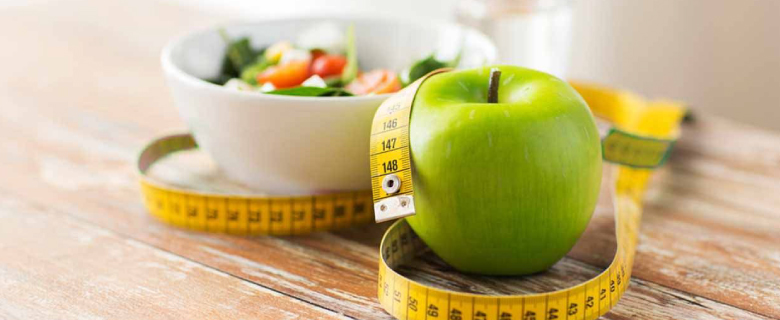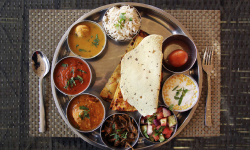
Understanding The Ayurvedic Diet For Weight Loss

Early morning
A glass of warm water with a teaspoon of honey and the juice of half a lemon.


Breakfast
A cup of low-fat milk with moong bean sprouts.


Mid-morning
Eat a whole fruit like an apple, orange or any seasonal fruit.


Lunch
- Salad of raw vegetables like cucumber, onion, tomatoes etc.
- Steamed or boiled vegetables like cabbage, carrot, and beetroot.
- Whole grain bread or whole wheat chapatis.
- A glass of buttermilk with roasted cumin seeds, coriander leaves, a pinch of salt and some grated ginger.


Mid-afternoon
Dry fruits or coconut water or lemon tea or vegetable soup.


Dinner
- Whole grain bread or chapatis.
- Steamed vegetables.

Talking to a certified Ayurvedicvaidya and nutritionist can help you learn more about a healthy diet plan for weight loss that’s right for you. Feel free to sign up for an Ayurvedic diet consultation here.
 Improved digestion
Improved digestion
 Stable, healthy weight
Stable, healthy weight
 Better energy and stamina
Better energy and stamina
 Mental and physical wellness
Mental and physical wellness
 Stronger immunity
Stronger immunity
 THE
THEBENEFITS OF
AN AYURVEDIC
DIET
In Ayurveda, food is a source of nourishment and medicine, used to prevent and manage any kind of disease, and improve your overall well-being. As a personalised healthcare science, Ayurveda provides guidelines on what you should eat, how much you should eat, and when you should eat.
“Unlike other crash diets or weight-loss food fads that eliminate major food groups such as carbohydrates or fats, the Ayurvedic diet does not punish you with deprivation. It, in fact, asks you to listen to your body’s cues and understand what foods work for you and what don’t.”
The Ayurvedic diet is based on customised, wholesome and mindful eating in alignment with the 24-hour day and night cycle and changing seasons.
THE 6 PRINCIPLES OF THE AYURVEDIC DIET

1. Opt for seasonal, local produce:

The Ayurvedic diet is primarily structured around the cycles of nature.
it’s important to eat seasonal, local produce that provides optimal nutrition for our body to adapt to the current environment.
2. Choose a balanced diet of whole foods:

Eat a diet of whole grains, fruits, vegetables and legumes that are fresh, minimally processed and retain their full nutritional content.
Processing and refining decrease the food’s nutritive value and increases the likelihood of added fats, salt and sugar.
3. Include all 6 rasas (tastes) for every meal:

Begin your meal with foods that have a sweet taste.
Move on to slightly salty and sour foods like pickles etc.
Finish with foods that are pungent, astringent and bitter. These tastes are light for digestion so chances of indigestion are minimised.
4. Practise mindful eating:

Avoid distractions such as talking, reading a book or watching TV while eating.
Also, avoid stress-inducing conversations or scolding children during meals. The reason behind this is if we’re in stress while eating food then our mind goes into an unpleasant state and releases specific hormones, which leads to indigestion.
Focus on what’s on your plate and engage all your five senses of sight, smell, touch, taste and hearing to appreciate every morsel of food that nourishes you; as this helps us absorb maximum nutrition from the food.
Chew and eat slowly to promote smooth digestion and prevent gastric problems; as the release of the digestive enzymes start from our mouth hence it’s very important to chew the food properly.
Recognise when your body signals signs of fullness to avoid overeating. This is very much important as we should always eat only 75% of the total capacity, leaving 25% space free; doing so we never suffer from indigestion and heavy stomach with gases or bloating.
5. Eat a modest breakfast, large lunch and light dinner:

Plan your largest meal during lunch. This is because we are a part of the whole universe, which includes the sun, moon, stars, animals, plants, etc. Hence we should align ourselves to the rules of this universe. Sun is the representative of the fire element in our universe, which has the maximum strength around 12 noon. This depicts that our digestive power is also the strongest at that time and so we should have the largest meal during lunch.
Eat a modest breakfast and light, early dinner, as your digestive system is slower during these time periods.
6. Keep a space of 3-6 hours between meals:

Wait for at least 3 hours for your previous meal to be digested before you eat again.
Don’t go without food for longer than 6 hours. This is because eating less or fasting weakens the digestive power of our body. And at the same time, this activates the body’ s storage mechanism, which leads to the conversion of all food eaten into fats.
Our team at Mi.Bo.So consists of Ayurvedic vaidyas, nutritionists and yoga coaches who can guide you in your journey towards healthy eating and mindful living. In addition to a weight loss diet, you will also be recommended a daily routine that addresses your exercise regime, yoga and meditation, stress management, and sleep schedule.
By understanding and responding to your body’s needs and enjoying the foods that support your wellness, you’ll notice a difference in your weight, immunity, energy and vitality yourself.
If you have any queries, feel free to leave a comment below and we’ll get back to you!





4 Comments
Rahul
Why does Ayurveda advise say to start the meal with something sweet?
ReplyAccording to Ayurveda, the order in which we should consume our food is connected to the wellness of our gut. Hence, we you should eat something with naturally sweet taste, first as it stimulates the stomach juices better and can easily be digested. Sweet takes more time to digest and by eating it in the end, you will end up delaying your digestion process. digestive system.
In a hungry person, consuming sweets first balances the vata and pitta dosha in the stomach. While salty and sour help stimulate the Pitta in the small intestine for further digestion and absorption process. The is pungent taste helps subdue the Kapha in the body.
Therefore, an Ayurvedic diet plan would suggest to eat sweet first, followed by something sour and end your meal with something spicy, salty, pungent and bitter. We should always end the meal by eating something with an astringent taste.
Vivek
What are the benefits of an Ayurvedic diet?
ReplyAn Ayurvedic diet is customised according to your body’s Dosha and Prakruti - Vata, Pitta & Kapha, as well as Rutu or season. An Ayurvedic diet plan encourages you to take a natural well balanced diet that can be easily digested. In this way, you don’t have to worry about altering your diet too much.
The main benefits would be:
- Consuming whole foods
- Consuming local and seasonal foods
- Helps in maintaining healthy weight lose
- Promotes mindfulness
- It keeps your body healthy
- It saves you from adverse effects from eating junk food and supplements
The Ayurvedic diet emphasises eating the right food, which improves overall health and boosts weight loss in overweight and obese individuals. Adapting the practice of following an Ayurvedic diet may promote a healthy relationship with food. Hence this diet should be included in your health and fitness management along with other Dincharaya activities.
Thank you. Your comment will be visible after an approval.
Add your comment